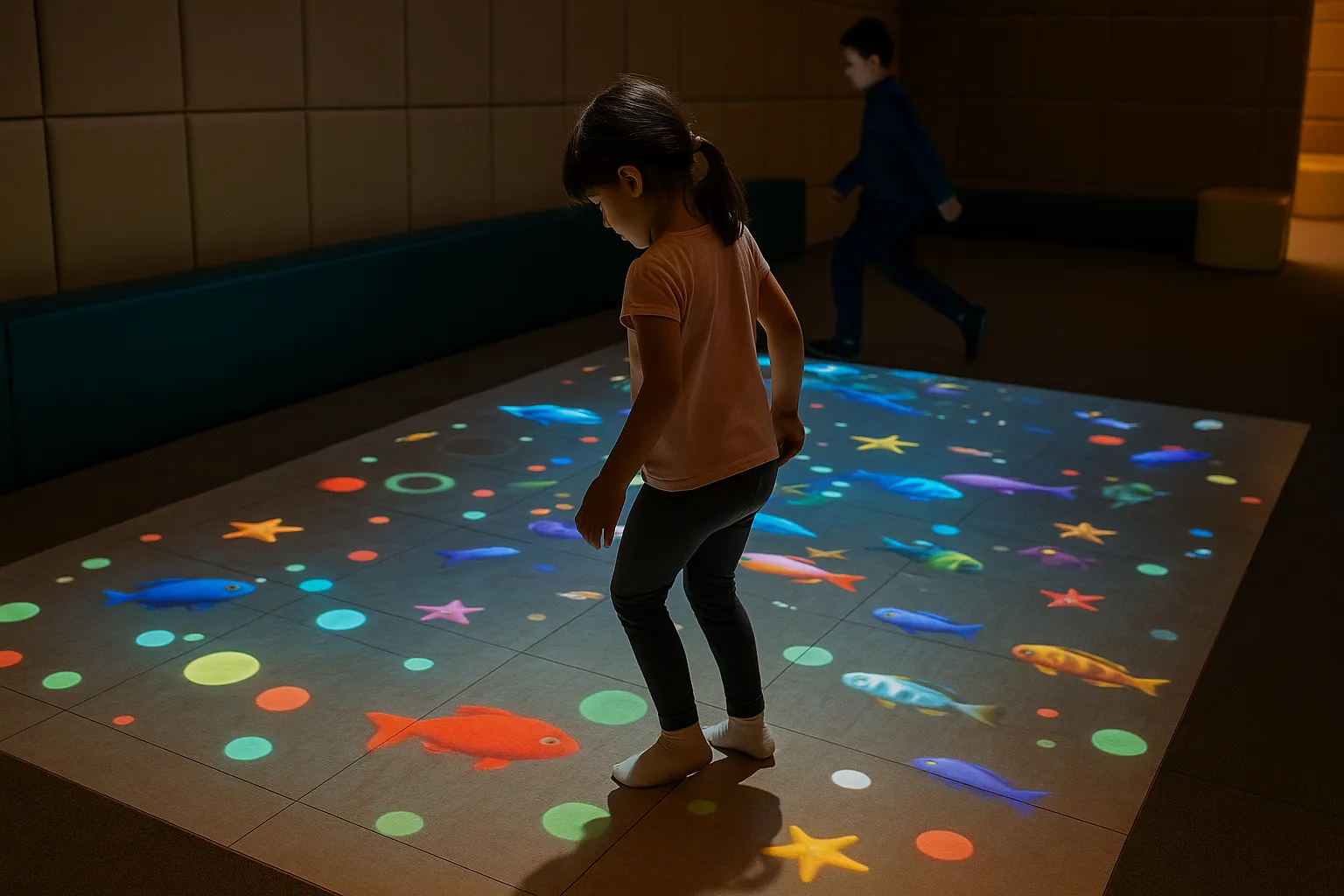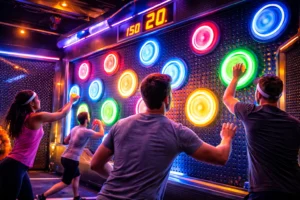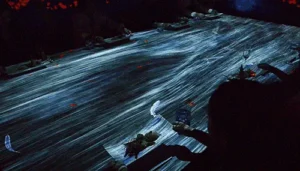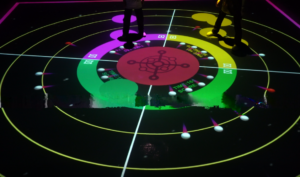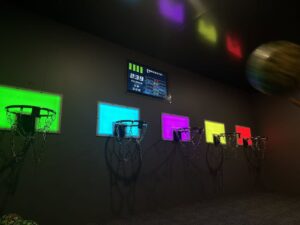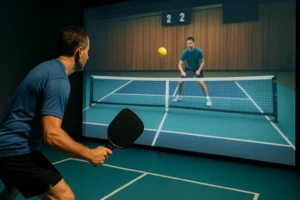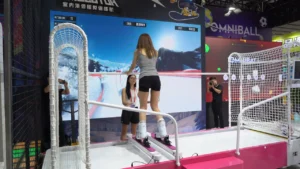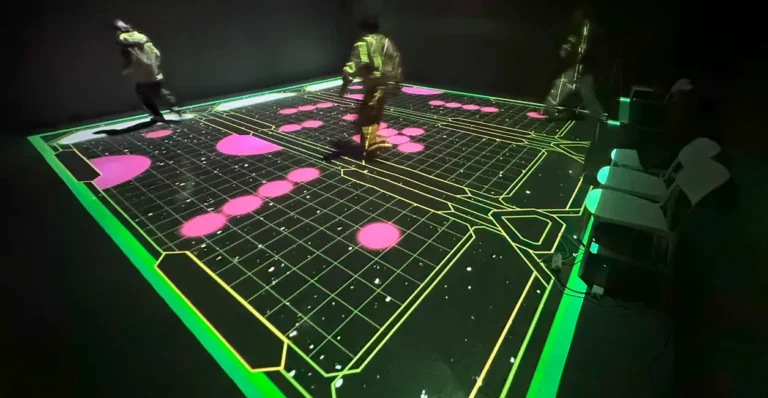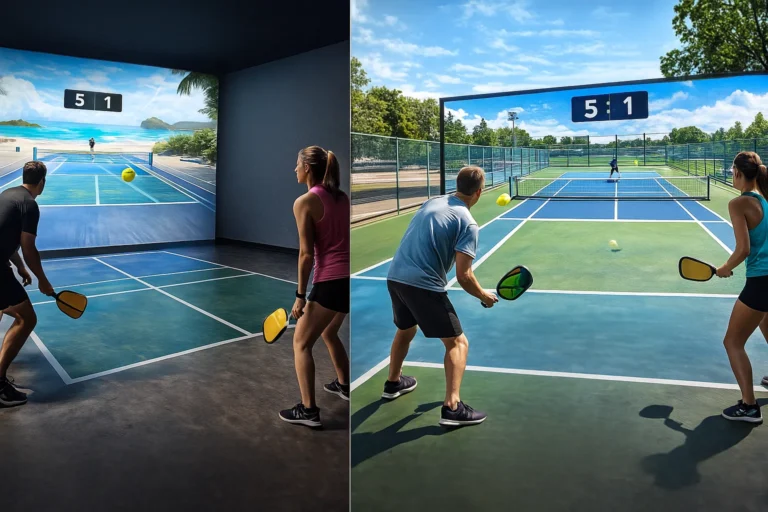🎮 How Are Dynamic Floor Game Images Produced?
Dynamic floor mapping systems use high-definition projectors, motion sensors, and interactive software to create real-time visual effects on any surface. The production of dynamic floor game images involves several coordinated components:
- Projection Unit 🎥 — Uses a high-lumen projector to display animated scenes or games.
- Sensing Module ⚙️ — Infrared or radar sensors detect body movement or foot pressure.
- Image Processing System 💻 — The core software interprets movements and translates them into interactive responses.
These synchronized systems turn ordinary floors into magical, motion-reactive game zones. For example, when a child steps on a virtual puddle, a splash animation appears instantly — powered by frame-based rendering and light-sensitive algorithms.
⚡ What Are the Sensing Principles of Dynamic Floor Mapping Machines?
The sensing principles are based on infrared, depth, or radar-based tracking technology. Here’s how it works:
- Infrared Detection 🔦 — Sensors emit invisible light beams to detect position and movement.
- Depth Mapping 📡 — Using 3D cameras (like Kinect or Lidar), the machine reads depth and shape data.
- Real-Time Computation 💽 — Software algorithms match movement coordinates to the corresponding projection layer.
Each system creates a “virtual playground” that reacts intelligently to human motion. The faster a player moves, the quicker the interactive response. This real-time feedback loop creates an engaging sensory experience suitable for players of all ages.
🏗️ What Are the Main Applications of Dynamic Floor Game Mapping Machines?
The applications go far beyond entertainment. Modern dynamic floor mapping systems are used in:
| 🏢 Application Area | 🎯 Purpose | 💡 Example Installation |
|---|---|---|
| Family Entertainment Centers | Game engagement and ticket sales | Interactive soccer and pool splash games |
| Kindergartens & ECE Classrooms | Early childhood sensory development | Educational motion learning floors |
| Shopping Malls & Exhibitions | Customer attraction & retention | Dynamic floor branding projection |
| Museums & Art Galleries | Immersive art experiences | Reactive story-based projection zones |
| Fitness Clubs & Gyms | Exercise gamification | Motion-tracking dance and sport floors |
💰 How to Generate Revenue Through Coin-Operated Dynamic Floor Machines?
The most practical question for every operator: how can this technology make money?
Here are the proven revenue models:
- Coin-Operated Game Systems 🪙 — Install a pay-to-play floor machine in malls or arcades. Each session lasts 2–5 minutes.
- Membership-Based Play Zones 🎟️ — Combine multiple projection zones into a subscription-based children’s area.
- Event Leasing 🧳 — Rent dynamic floor systems for events, exhibitions, or pop-up shows.
- Advertising Integration 🪩 — Display branded logos or interactive ads during idle time.
🧠 What Are the Advantages and Disadvantages of Dynamic Floor Mapping Systems?
| ✅ Advantages | ⚠️ Disadvantages |
|---|---|
| High engagement and sensory feedback | Requires a dark or semi-dark environment |
| Easy installation and calibration | Sensitive to projector alignment |
| Low maintenance cost | May need software updates regularly |
| Strong marketing appeal | Space-limited projection zones |
| Works for education, entertainment, and retail | Higher upfront cost compared to static games |
💡 onecraze offers a hybrid model — you can order your dynamic floor mapping system directly from onecrazemedia.com or request an OEM solution from our manufacturer network for large-scale setups.
🔧 Why Should You Choose onecraze as Your Supplier?
As a professional manufacturer and supplier of interactive projection systems, onecraze offers:
- 🧠 Latest generation motion detection software
- 🖥️ Full HD and 4K-compatible projection systems
- 🧩 Custom content design and calibration tools
- 🌍 Global installation and after-sales service
👉 The price depends on projector brightness, software version, and sensor type. onecraze’s systems start from mid-range configurations suitable for small venues up to professional-grade setups.
✅ Yes! The software supports modular updates. You can easily buy or order new games through the onecraze content library.
⚙️ Minimum projection area: 3×2 meters. For larger spaces, multiple projectors can be combined into one seamless interactive floor.

